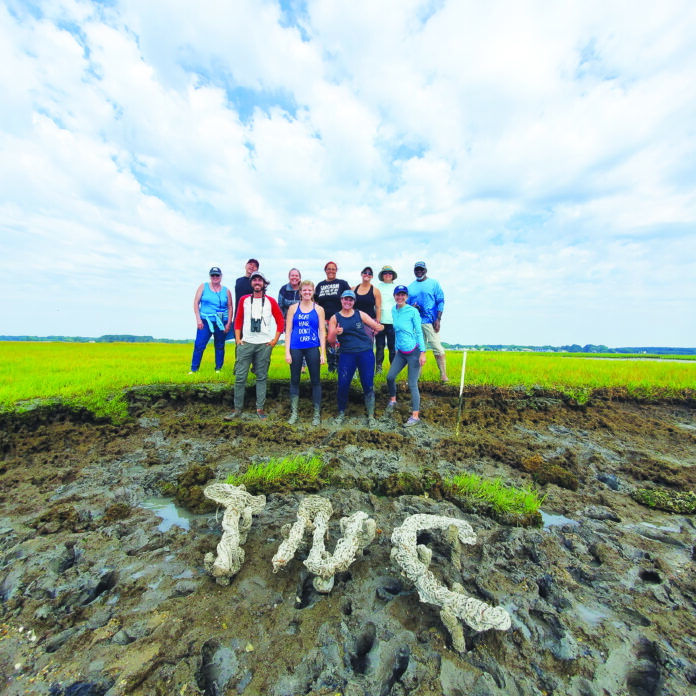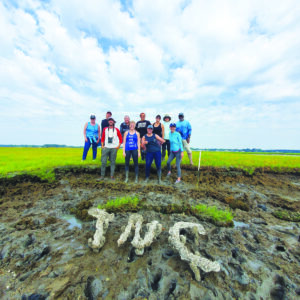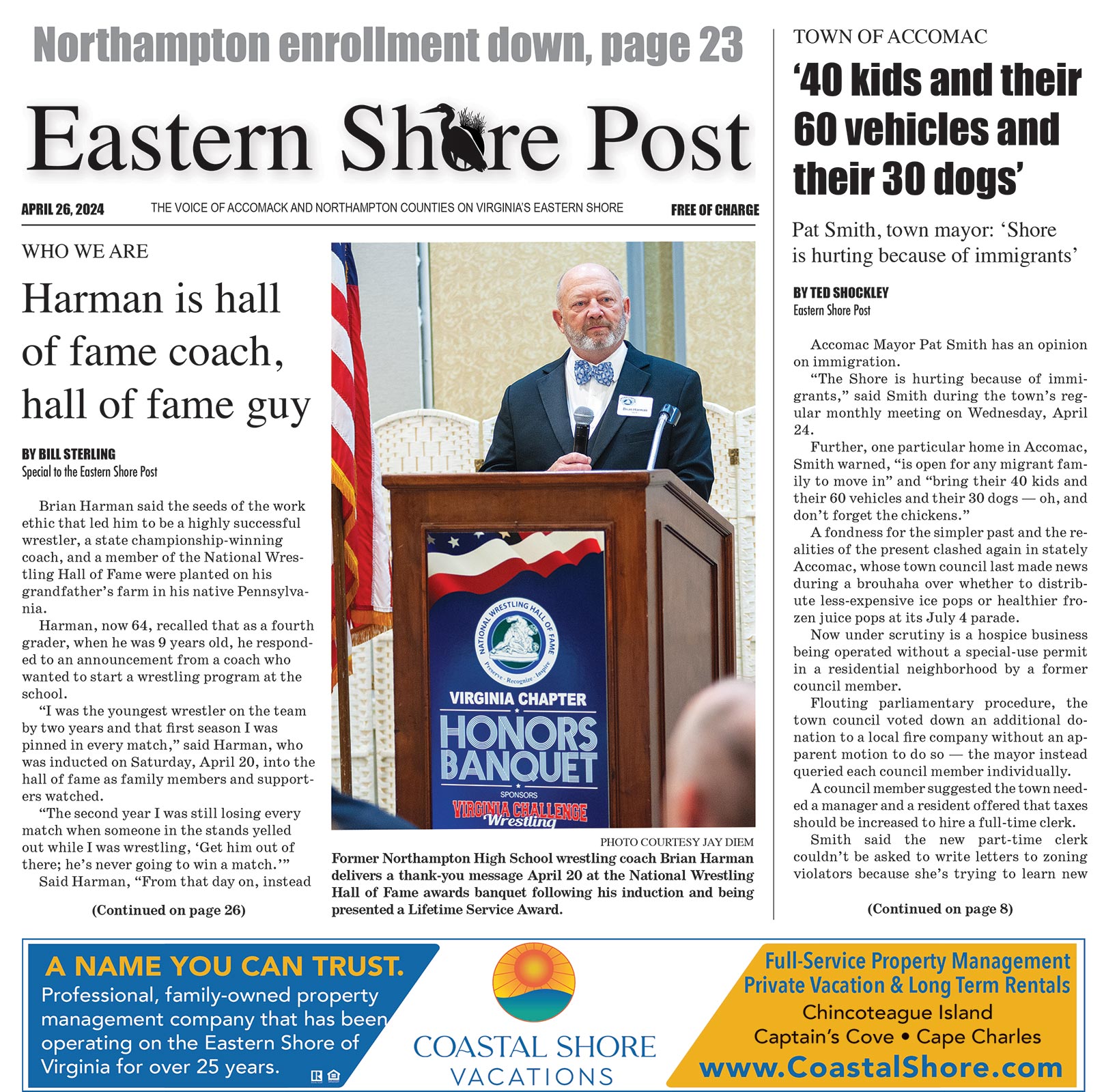
BY STEFANIE JACKSON, Eastern Shore First —
The Nature Conservancy recently completed a $1.4 million oyster reef project with the help of nearly 160 volunteers, mostly Eastern Shore residents, who logged nearly 2,200 volunteer hours on the project.
“It’s really, really cool to see how many people in this community, and from even outside the community, want to come here and work with us,” said Bo Lusk, TNC coastal scientist and project lead.
“There’s absolutely no way The Nature Conservancy could’ve done this by themselves, without volunteer help,” Lusk said.
It was the largest volunteer effort that Lusk had witnessed at TNC in 16 years, he said.
The project, which spanned roughly 3.5 years, was planned to reduce the erosion of a marsh island outside Wachapreague, protecting both a wildlife habitat and the town from coastal hazards.
The marsh system once was protected by the south end of Cedar Island. Over the past decade, Wachapreague Inlet has widened, exposing both the marshes and the town to the open ocean.
To help restore this line of defense against storms and wave action, TNC staff and volunteers built approximately 10,000 oyster castles weighing 35 pounds each, a total of about 175 tons.
The workers also created about 1,600 pieces of substrate, a surface to which organisms — in this case, oysters — attach and grow.
That part of the project was done at TNC’s Brownsville Preserve, in Nassawadox, using a lightweight, biodegradable material called Oyster Catcher, made by a company in North Carolina.
“This was a fun project for me in that it was a bit of a challenge. … We couldn’t just come up with one way to build these reefs and build them the same (along) the whole 2,000 feet of shoreline,” Lusk said.
The substrate provided additional surface for oysters to attach in areas that were too muddy, steep, or uneven for oysters castles to work well.
“One thing I knew for sure from the start, whether or not we actually had a big impact on slowing down the erosion of the marsh, I knew at the very least I could promise to people that we were going to grow a lot of oysters … and they’ve even surpassed my expectations,” Lusk said.
But not only are there more oysters on the seaside, filtering the water and providing habitats for fish, there is evidence that the erosion of the marshes has slowed.
By comparing current images of the shoreline to old aerial maps, scientists can see that even though the top of the marsh’s edge may continue to erode, its base remains generally stable due to the protection of the oyster castles.
That creates “a more gradual slope” over which waves roll more gently, instead of “a steep wall for the waves to bang into,” and cause the marsh land to crumble into the ocean, Lusk explained.
“Long term, we’re going to still have a marsh there, even if the top of it’s a little bit smaller,” he said.
The oyster reef protects the marsh against erosion from normal wave action; in turn, the marsh protects the town of Wachapreague against “big storm high tides,” Lusk said.
A University of Virginia student will continue monitoring the project, including wave interaction with the reefs, oyster growth, and the types of sediment that collect behind the reefs.
TNC will monitor the progress of the erosion reduction and do additional work on the project as needed.
The project was completed through the partnership of TNC, U.Va., the Accomack-Northampton Planning District Commission, and the Town of Wachapreague, with funding from the National Fish and Wildlife Foundation and the help of volunteers.

The Nature Conservancy recently completed a $1.4 million oyster reef project with the help of nearly 160 volunteers, mostly Eastern Shore residents.
On the record turnout of volunteers, Lusk said, “We … just happen to have some local folks who … I don’t know, this is just something they like to come do for fun.”
He said volunteering “gives you a fun activity that also makes you feel good about what you’re doing.”


